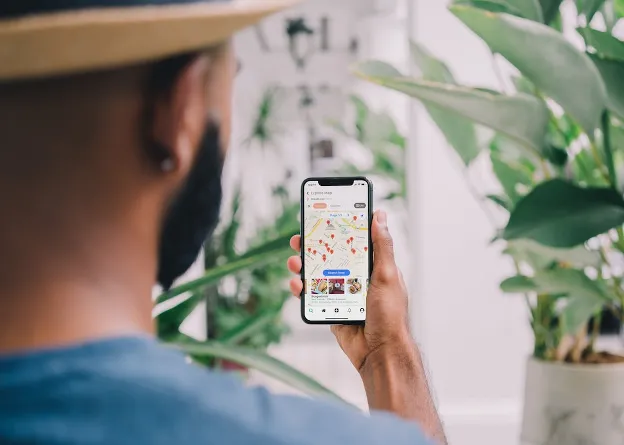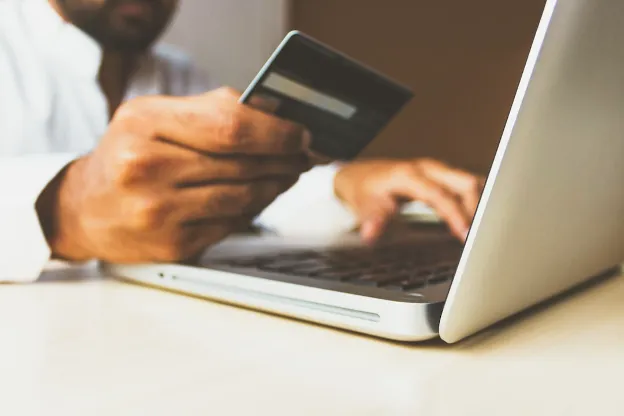Sales Funnel Stages Explained: A Complete Guide

-
What is a Sales Funnel?
-
The 3 Ingredients of a Successful Sales Funnel
- How to Define Your Sales Funnel
- The Value of a Sales Funnel
- Why Do You Need a Sales Funnel?
-
The 5 Sales Funnel Stages
- 1. Awareness
- 2. Discovery
- 3. Evaluation
- 4. Intent
- 5. Purchase
- (Bonus) Retention
-
2 Real-Life Sales Funnel Examples
- Example 1: ClickFunnels
- Example 2: Hubspot
-
Four Steps to Finding the Right Leads Fast
-
Researching Solutions at the Middle of the Sales Funnel
-
Making an Educated Purchase Decision at the Bottom of the Sales Funnel
-
How a Solid Sales Funnel Impacts Your Prospects
-
How a Solid Sales Funnel Impacts Your Organization
-
How to Create a Sales Funnel from Scratch
-
How to Optimize Your Sales Funnel
-
Conclusion
Disclosure: Some of the links in this article may be affiliate links, which can provide compensation to me at no cost to you if you decide to purchase. This site is not intended to provide financial advice and is for entertainment only.
Are you struggling to convert leads into customers? Do you find it challenging to understand where your prospects are in the buying journey? It's time to unveil the power of sales funnels. In this comprehensive guide, we will walk you through everything you need to know about sales funnels, from their definition and value to why your business needs one. We will explore the five crucial stages of a sales funnel, including awareness, discovery, evaluation, intent, and purchase. Plus, we'll provide real-life examples and share tips on finding the right leads quickly and optimizing your funnel for maximum results. Get ready to supercharge your strategy and boost your business growth with a well-structured and optimized sales funnel. Let's dive in!
What is a Sales Funnel?
A sales funnel is a marketing model that visually depicts the customer journey from initial awareness to making a purchase. It consists of stages like awareness, interest, decision, and action. The main objective of a sales funnel is to guide prospects through each stage and successfully convert them into paying customers.
The 3 Ingredients of a Successful Sales Funnel
The three essential ingredients for a successful sales funnel are awareness, interest, and conversion.
In the awareness stage, businesses attract potential customers through marketing and advertising efforts using various channels such as social media, blogs, and email campaigns. At this stage, it is crucial to create informative and engaging content to capture the attention of the target audience. Once prospects are aware of the product or service, the next step is to nurture their interest. This is achieved by providing personalized messaging, relevant content, and solving their pain points. Ultimately, the goal is to convert leads into paying customers by offering targeted offers, persuasive tactics, and demonstrating the value of the product or service. By focusing on these three ingredients, businesses can create an effective sales funnel that guides potential customers through each stage of the buyer's journey, maximizing the chances of a successful conversion.
How to Define Your Sales Funnel
To define your sales funnel, you need to consider the three key ingredients that make it successful: awareness, consideration, and decision. In the awareness stage, potential customers become aware of your product or service through marketing efforts. This can be done through various channels such as social media, blogs, and email campaigns. The consideration stage involves providing valuable information and building trust with potential customers. You can do this through educational content, testimonials, case studies, and webinars. Finally, in the decision stage, potential customers make the final decision to purchase from you. This is where you can offer special offers, free trials, and pricing options to encourage conversion. By mapping out these stages and touchpoints, you can effectively define your sales funnel and guide potential customers through the buying process.
The Value of a Sales Funnel
A successful sales funnel is a systematic process that guides potential customers through different stages of the buying journey. It starts with attracting leads, where effective marketing strategies generate interest and awareness in your product or service. The next stage is nurturing those leads by building relationships with prospects through consistent communication and valuable information. Finally, the goal is to convert leads into paying customers by implementing effective techniques and closing strategies. Sales funnels are crucial for businesses as they optimize the customer journey, increase conversion rates, and maximize revenue. By understanding the value of a funnel, businesses can create a more efficient and effective sales process.
Why Do You Need a Sales Funnel?
A sales funnel is essential because it guides potential customers through the buying process, nurturing leads and converting them into paying customers. It enables you to track customer behavior, optimize your marketing efforts, and automate parts of the sales process, saving time and resources.
The 5 Sales Funnel Stages
The sales funnel consists of five stages that guide potential customers through the buying journey. The first stage is awareness, where the focus is on attracting potential customers and creating awareness about your product or service. Next is the interest stage, where leads are engaged and provided with more information to generate interest. In the decision stage, leads are helped to make a decision by presenting them with relevant information and offers. The action stage is all about encouraging leads to take action, whether it's making a purchase or signing up for a service. Finally, in the retention stage, the focus shifts to building customer loyalty through ongoing communication and support. These stages are crucial for optimizing the customer journey, increasing conversion rates, and maximizing revenue.
1. Awareness
The awareness stage, which is the first stage of the sales funnel, focuses on introducing potential customers to your brand and the solutions you offer.
This can be achieved through various marketing channels such as social media, content marketing, and advertising. The main goal in this stage is to attract a wide audience and generate leads by providing valuable content and capturing their contact information. To effectively engage with your target audience, it's important to address their pain points and challenges in your messaging. Building trust and establishing yourself as an authority in your industry are essential at this stage, as potential customers may not be ready to make a purchase yet.
2. Discovery
During the discovery stage of the sales funnel, potential customers become aware of your product or service.
This is when they actively seek information and solutions to their problems. To engage them effectively, provide valuable content and resources that educate and address their needs. Utilize tactics such as blog posts, social media content, videos, and webinars to establish your brand as a credible solution provider. The goal is to build trust and present your brand as the go-to choice in the eyes of potential customers. By offering valuable insights and solutions during this stage of the funnel, you can guide potential customers toward the next stage of their journey.
3. Evaluation
In the evaluation stage, potential customers engage in thorough research and compare different products or services available to them.
They may read reviews, seek recommendations, or conduct online searches to gather information. Marketers can play a crucial role by providing valuable content and resources that help customers make informed decisions. Offering free trials, demos, or samples can showcase the value of the product or service and further convince potential customers. It is important for businesses to understand their target audience and tailor their messaging and offerings to meet their specific needs during the evaluation stage. By doing so, they can effectively guide potential customers towards the next stage of the sales process.
4. Intent
The intent stage is where potential customers demonstrate a clear interest in your product or service. It is characterized by actions such as visiting your website, subscribing to your email list, or engaging with your social media posts. Tracking and analyzing customer data during this stage is crucial to understanding their preferences and needs. By identifying the intent of potential customers, you can tailor your marketing efforts to nurture and convert them into paying customers. Effective strategies at this stage include personalized email campaigns, targeted advertising, and providing valuable content that addresses their specific interests. This stage plays a vital role in guiding potential customers through the sales funnel towards the ultimate goal of conversion.
5. Purchase
The purchase stage, as the final phase of the sales funnel, marks the moment when a potential customer becomes an actual paying customer.
This stage carries significant importance for businesses, as it signifies the successful conversion of leads into revenue-generating customers. To ensure a smooth and seamless purchasing process, businesses must prioritize removing any obstacles or barriers that may hinder the customer's decision-making process. Offering multiple payment options and ensuring a secure checkout process are effective strategies to boost conversion rates at this stage. Moreover, post-purchase follow-ups, upselling or cross-selling opportunities, and delivering exceptional customer service play a crucial role in nurturing the customer relationship and encouraging repeat business and referrals.
(Bonus) Retention
Retaining customers and fostering long-term relationships is a crucial stage in the sales funnel. After customers have taken action and made a purchase, it's important to focus on keeping them engaged and satisfied. By providing exceptional customer experiences and valuable post-purchase support, you can increase customer retention and encourage repeat business. This can be achieved through various strategies such as personalized email campaigns, exclusive offers, loyalty programs, and proactive customer service. Additionally, leveraging social media platforms and creating engaging content like blog posts, webinars, and podcasts can help keep your brand top of mind for existing customers. Building strong relationships with your customers not only leads to repeat sales but also increases the likelihood of referrals and positive testimonials, which can further enhance your brand's reputation and drive new leads.
2 Real-Life Sales Funnel Examples
In the awareness stage, a company effectively utilized social media advertising to generate interest and attract potential customers. By targeting their audience through platforms like Facebook and Instagram, they were able to raise brand awareness and drive traffic to their website or landing page.
Moving on to the consideration stage, let's take a case study where a company used email marketing and personalized content to nurture leads. By providing valuable information and addressing pain points, they built trust and credibility with their prospects, gradually guiding them towards making a purchase decision.
Lastly, in the decision stage, we have an example of a company that implemented targeted sales calls and demos. Through these personalized interactions, they were able to address any remaining concerns or objections and ultimately convert leads into paying customers.
These real-life examples highlight the effectiveness of different strategies at each stage of the sales funnel, showcasing the importance of understanding your target audience and tailoring your approach to meet their specific needs and preferences.
Example 1: ClickFunnels
ClickFunnels, a widely known sales funnel software, offers a comprehensive solution for creating effective sales funnels.
The first stage in the ClickFunnels process begins with the landing page. This is where visitors are directed after clicking on an ad or link. It serves as the entry point to the process. The next stage is the opt-in page, where visitors are prompted to provide their contact information in exchange for something valuable, such as a free ebook or webinar. Following the opt-in stage, the sales page takes center stage. Here, the product or service is presented, and visitors are encouraged to make a purchase. Additionally, ClickFunnels includes further stages like order forms, upsells, and downsells to maximize conversions and increase revenue.
Example 2: Hubspot
Hubspot, a well-known marketing and sales software company, serves as a real-life example of how a funnel can be implemented. To attract potential customers, Hubspot offers free resources like blog articles, ebooks, and webinars at the top of their funnel. As leads progress through the funnel, they are encouraged to sign up for a free trial or demo of Hubspot's software. In the middle of the funnel, Hubspot focuses on nurturing leads with targeted content and personalized communications. Finally, at the bottom of the funnel, Hubspot presents pricing plans and emphasizes the value and benefits of their software to convert leads into paying customers.
Four Steps to Finding the Right Leads Fast
To effectively find the right leads quickly, it's essential to follow a systematic approach that covers all stages of the sales funnel. The first step is awareness, where you attract potential customers through targeted marketing campaigns and content creation. By utilizing social media platforms, blogs, and SEO optimization, you can reach your target audience and generate interest. The second step is interest, where you engage leads by providing valuable information and solutions to their problems. This can be achieved through compelling blog posts, webinars, and email campaigns. The third step is the decision stage, where you convince leads to choose your product or service over competitors through personalized messaging and offers. By utilizing case studies, testimonials, and special offers, you can create a sense of trust and urgency. Finally, the action stage involves closing the sale and converting leads into paying customers through effective sales techniques and follow-up strategies. By implementing these four steps, you can efficiently find the right leads fast and increase your conversion rates.
Researching Solutions at the Middle of the Sales Funnel
At the middle of the sales funnel, potential customers have identified their problem and are actively researching solutions. Providing valuable content and information is crucial in educating and guiding them through their decision-making process. To build trust and credibility, showcase your expertise and present case studies or testimonials from satisfied customers. Tailor personalized solutions and recommendations to address their specific needs and pain points. Utilize lead nurturing tactics like email marketing or retargeting ads to remain top of mind and encourage them to progress further down the funnel. By offering valuable resources and staying engaged, you can effectively guide potential customers towards making informed purchasing decisions.
Making an Educated Purchase Decision at the Bottom of the Sales Funnel
At the bottom of the sales funnel, potential customers have progressed through the various stages, including awareness, interest, consideration, intent, and evaluation.
Now, they are poised to make an educated purchase decision. To facilitate this process, it is crucial to continue providing valuable content and information that address their specific needs and pain points. Marketing automation tools can streamline the sales funnel by automating repetitive tasks and ensuring timely and relevant communication with potential customers. Additionally, optimizing the funnel can lead to increased conversions and maximize revenue. This can be achieved by crafting compelling offers, leveraging customer testimonials, providing personalized experiences, and utilizing data-driven insights to improve the overall customer journey.
How a Solid Sales Funnel Impacts Your Prospects
A solid sales funnel has a significant impact on your prospects throughout their customer journey. At the awareness stage, it helps attract potential customers and create brand awareness. Moving into the interest stage, your funnel engages with prospects and provides valuable information to build their interest. In the consideration stage, your funnel convinces prospects to consider your product or service as the solution to their problem. As they progress to the decision stage, your funnel helps them make a final decision and choose your offering over competitors. The action stage encourages prospects to take action, whether it's making a purchase or signing up for a service. Finally, in the retention stage, your sales funnel focuses on keeping existing customers engaged and satisfied, encouraging repeat purchases and referrals.
How a Solid Sales Funnel Impacts Your Organization
A solid sales funnel has a significant impact on your organization at every stage. In the awareness stage, you attract potential customers and create brand awareness through various channels such as social media, blog posts, and email campaigns. Moving to the interest stage, you engage with potential customers, nurturing their interest in your product or service and providing valuable information to keep them engaged. In the evaluation stage, you help potential customers evaluate the benefits of your offering compared to competitors, leveraging case studies, testimonials, and pricing information. The decision stage is crucial, where you convince potential customers to make a purchase and become paying customers. Retention comes into play in the next stage, where you focus on building customer loyalty and ensuring repeat business. Finally, in the advocacy stage, satisfied customers become your brand advocates, promoting your product or service to others.
How to Create a Sales Funnel from Scratch
Creating a sales funnel from scratch requires a strategic approach. Begin by understanding the different stages of the funnel: awareness, interest, decision, and action.
To attract your target audience at each stage, create compelling content tailored to their needs. Utilize lead generation tactics to capture potential customers' contact information, such as offering valuable resources or free trials. Nurture leads through email marketing campaigns and other strategies to guide them through the funnel. Track the success of your funnel using analytics and make necessary adjustments to optimize its performance. By following these steps, you can create an effective sales funnel and increase your chances of converting leads into loyal customers.
How to Optimize Your Sales Funnel
To optimize your sales funnel, start by understanding the different stages: awareness, interest, decision, and action. Identify potential bottlenecks in each stage and areas for improvement. Use targeted marketing strategies to attract and engage potential customers at every stage, leveraging social media, blogs, webinars, and newsletters. Implement lead nurturing techniques like email campaigns and personalized content to move leads through the funnel. Continuously analyze data and gather feedback to make data-driven improvements. With an effective sales funnel, you can improve conversion rates, retain customers, and drive revenue. By optimizing each stage of the funnel and providing a seamless customer journey, you can maximize the potential of your sales process.
Conclusion
In conclusion, understanding and implementing a well-defined sales funnel is crucial for business success. It helps you identify potential customers, nurture them through the different stages of the buying process, and ultimately convert them into loyal customers. By defining your sales funnel, you can streamline your marketing efforts, improve customer engagement, and maximize your conversions. Whether you're just starting out or looking to optimize your existing funnel, our complete guide has got you covered. Hit Subscribe to join our email list for more content like this!
-
What is a Sales Funnel?
-
The 3 Ingredients of a Successful Sales Funnel
- How to Define Your Sales Funnel
- The Value of a Sales Funnel
- Why Do You Need a Sales Funnel?
-
The 5 Sales Funnel Stages
- 1. Awareness
- 2. Discovery
- 3. Evaluation
- 4. Intent
- 5. Purchase
- (Bonus) Retention
-
2 Real-Life Sales Funnel Examples
- Example 1: ClickFunnels
- Example 2: Hubspot
-
Four Steps to Finding the Right Leads Fast
-
Researching Solutions at the Middle of the Sales Funnel
-
Making an Educated Purchase Decision at the Bottom of the Sales Funnel
-
How a Solid Sales Funnel Impacts Your Prospects
-
How a Solid Sales Funnel Impacts Your Organization
-
How to Create a Sales Funnel from Scratch
-
How to Optimize Your Sales Funnel
-
Conclusion
Disclosure: Some of the links in this article may be affiliate links, which can provide compensation to me at no cost to you if you decide to purchase. This site is not intended to provide financial advice and is for entertainment only.








